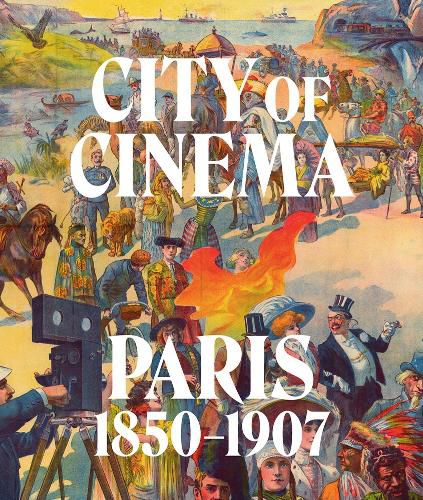Readings Newsletter
Become a Readings Member to make your shopping experience even easier.
Sign in or sign up for free!
You’re not far away from qualifying for FREE standard shipping within Australia
You’ve qualified for FREE standard shipping within Australia
The cart is loading…






How film emerged in 19th-century Paris amid an array of social, political, artistic and technological innovations–with works by the Lumiere brothers, Melies, Cheret and more
City of Cinema traces film’s evolution from an obscure entertainment to the most powerful art form of the 20th century. Placing cinema in the context of 19th-century Parisian visual culture, this book brings together posters, paintings, studio and documentary photography, and film stills that evoke Paris as a site of consumption, demonstrate early cinema’s relationship with technology and the fine arts, and highlight local and global spaces of film production. It also examines the aspects of 19th-century visual culture that gave rise to cinema as a quintessentially modern medium with an eager audience. Aligning with French beliefs that the nation’s culture would be democratized through consumption, cinema reinforced a set of assumptions about French cultural and political authority and disseminated these ideas to the rest of the world. Presented here are images of and from the street by Jean Beraud, Charles Marville, Jules Cheret and Auguste and Louis Lumiere; the technological experimentation of Loie Fuller, Emile Reynaud and Georges Melies; and the plein-air observations of Camille Pissarro and the staged artifice of Jean-Leon Gerome–all of which can be considered alongside the prototype film studios of Georges Melies, Gaumont and Pathe. At the dawn of the 20th century, cinema is as much, if not more, a way of appropriating the world. Through arresting images and incisive texts, this book examines the origins of cinema and its position as a global medium.
$9.00 standard shipping within Australia
FREE standard shipping within Australia for orders over $100.00
Express & International shipping calculated at checkout
How film emerged in 19th-century Paris amid an array of social, political, artistic and technological innovations–with works by the Lumiere brothers, Melies, Cheret and more
City of Cinema traces film’s evolution from an obscure entertainment to the most powerful art form of the 20th century. Placing cinema in the context of 19th-century Parisian visual culture, this book brings together posters, paintings, studio and documentary photography, and film stills that evoke Paris as a site of consumption, demonstrate early cinema’s relationship with technology and the fine arts, and highlight local and global spaces of film production. It also examines the aspects of 19th-century visual culture that gave rise to cinema as a quintessentially modern medium with an eager audience. Aligning with French beliefs that the nation’s culture would be democratized through consumption, cinema reinforced a set of assumptions about French cultural and political authority and disseminated these ideas to the rest of the world. Presented here are images of and from the street by Jean Beraud, Charles Marville, Jules Cheret and Auguste and Louis Lumiere; the technological experimentation of Loie Fuller, Emile Reynaud and Georges Melies; and the plein-air observations of Camille Pissarro and the staged artifice of Jean-Leon Gerome–all of which can be considered alongside the prototype film studios of Georges Melies, Gaumont and Pathe. At the dawn of the 20th century, cinema is as much, if not more, a way of appropriating the world. Through arresting images and incisive texts, this book examines the origins of cinema and its position as a global medium.